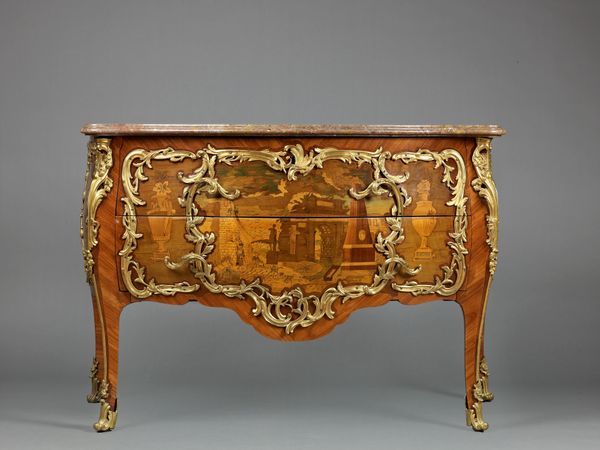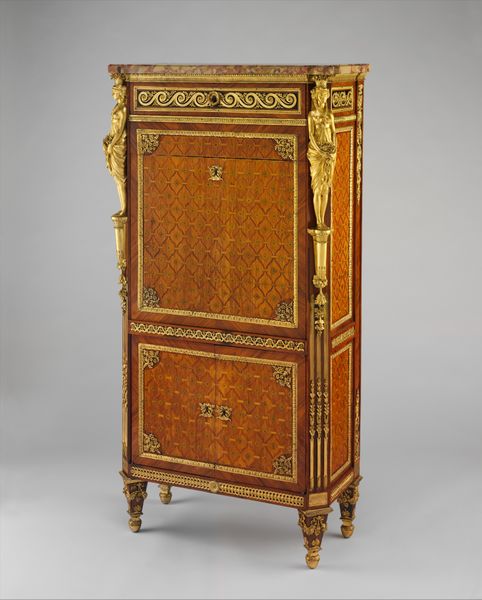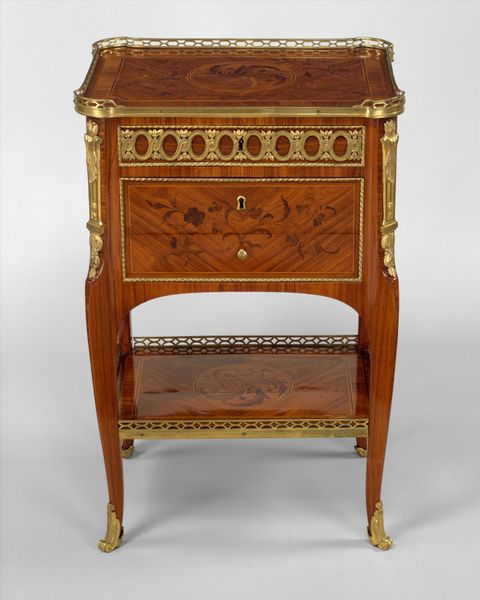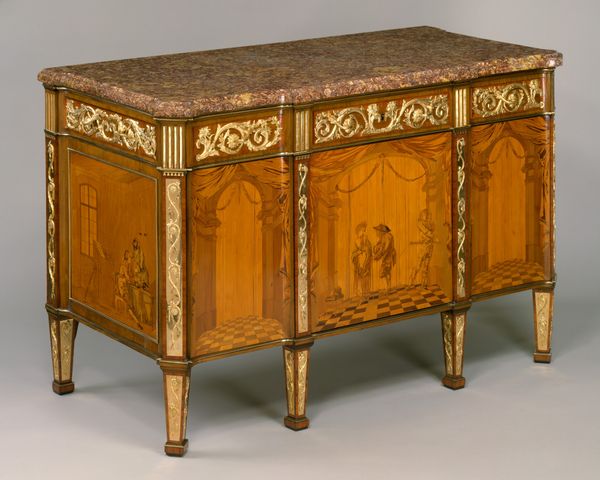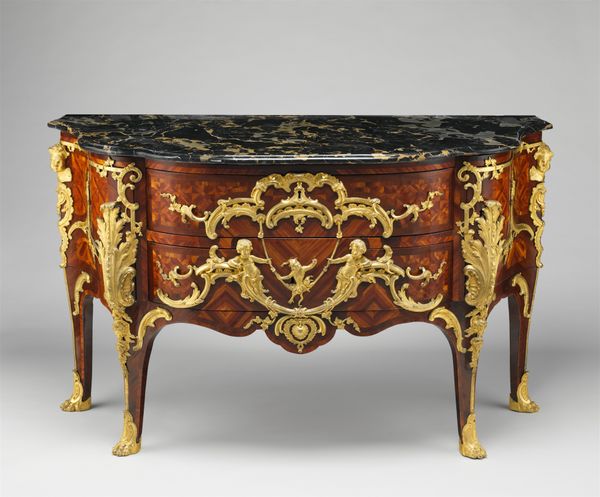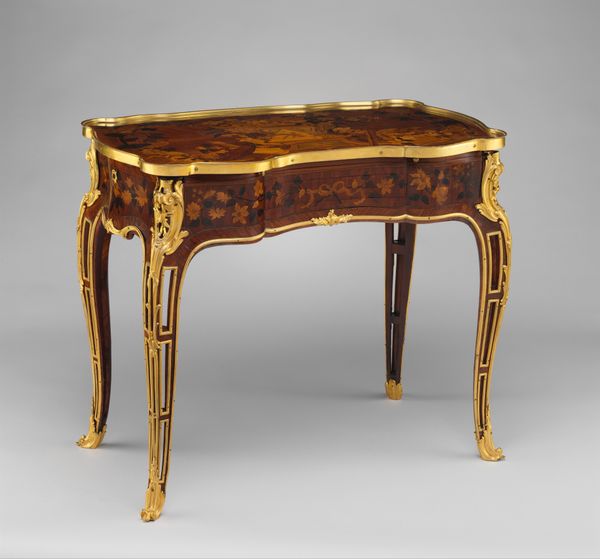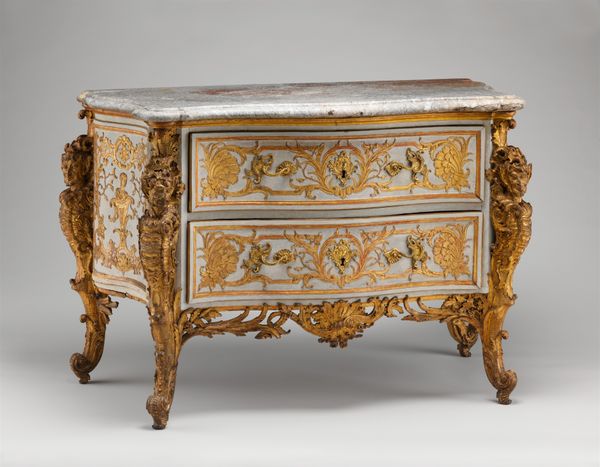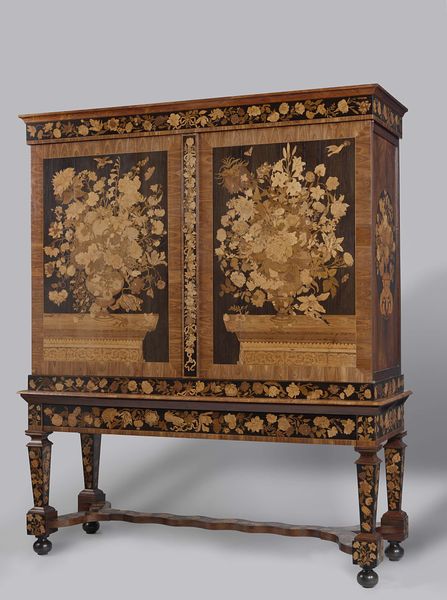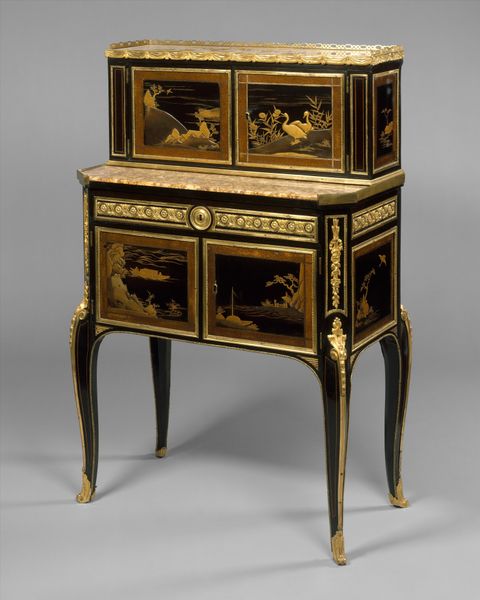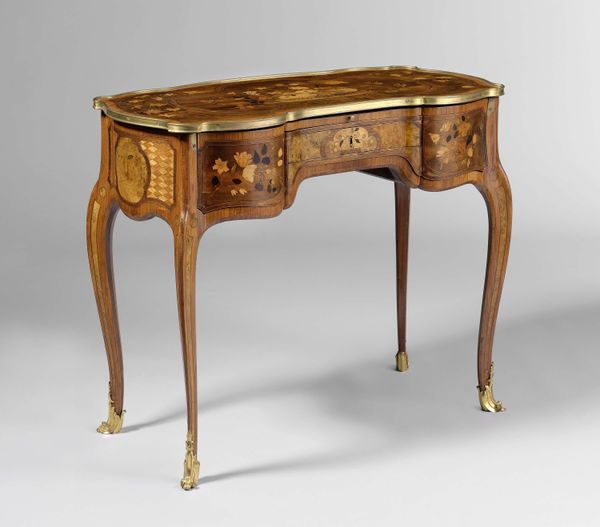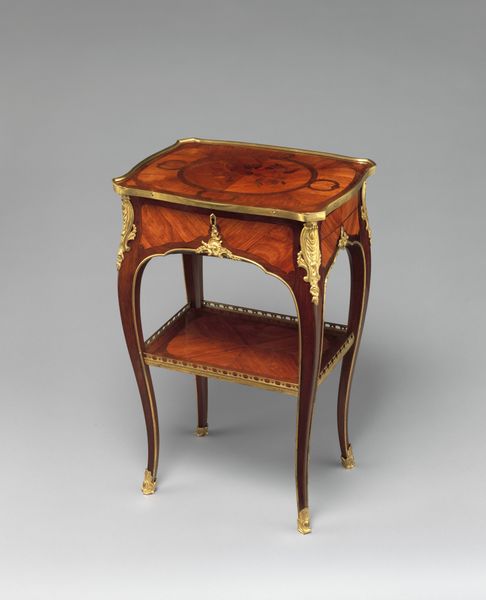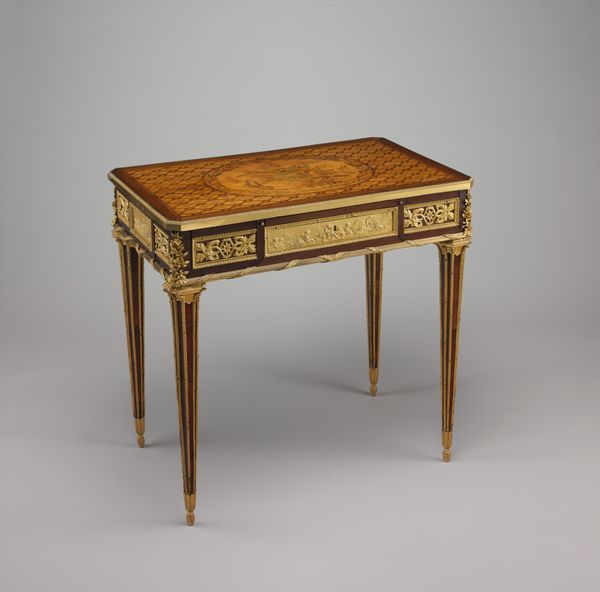
brass, metal, wood
#
neoclacissism
#
brass
#
metal
#
furniture
#
wood
#
decorative-art
Dimensions: H. 137.2 cm, W. 90.2 cm, D. 38.1 cm
Copyright: Public Domain
Editor: So, this is "Secretary," made from wood and metal by Adam Weisweiler, sometime between 1777 and 1793. The level of detail is incredible! What strikes me most is how this single piece embodies status and hints at the privileged life it must have inhabited. What can you tell me about its cultural context? Curator: Precisely! This "secrétaire à abattant," embodies the intersection of artistic skill and aristocratic display, particularly during the late 18th century. Considering the Neoclassical style, with its brass and restrained ornamentation, we should consider the society it was produced for: French aristocracy, eager to flaunt wealth. What do you think such furniture communicated in these settings? Editor: Well, I imagine this would be for personal correspondence and conducting affairs – and that this piece existing signaled you HAD personal correspondence to do, marking literacy and worldly engagement. It feels… performative, like so many other decorative pieces for the home. Curator: Exactly. Furniture became increasingly elaborate as a tool for constructing social hierarchies and visual power within domestic spaces. Do you notice how it's displayed here at the Met? Editor: Highlighting its grandeur, I think, placing it to resemble the home it might have belonged to, elevating its status. And almost making it into a sculpture rather than a desk. Curator: Interesting observation. The Met invites a critical engagement with such furniture pieces beyond mere aesthetic admiration, asking what social role this type of furniture plays today. Considering these issues, is its display here effective, in your view? Editor: It prompts good questions, I think. It forces the viewer to contemplate issues of status and access – issues that are just as relevant now as they were back then, maybe even more so. Curator: Agreed. Understanding furniture like this involves understanding the complex social and historical networks it occupied, and continues to occupy in places like the Met.
Comments
No comments
Be the first to comment and join the conversation on the ultimate creative platform.

